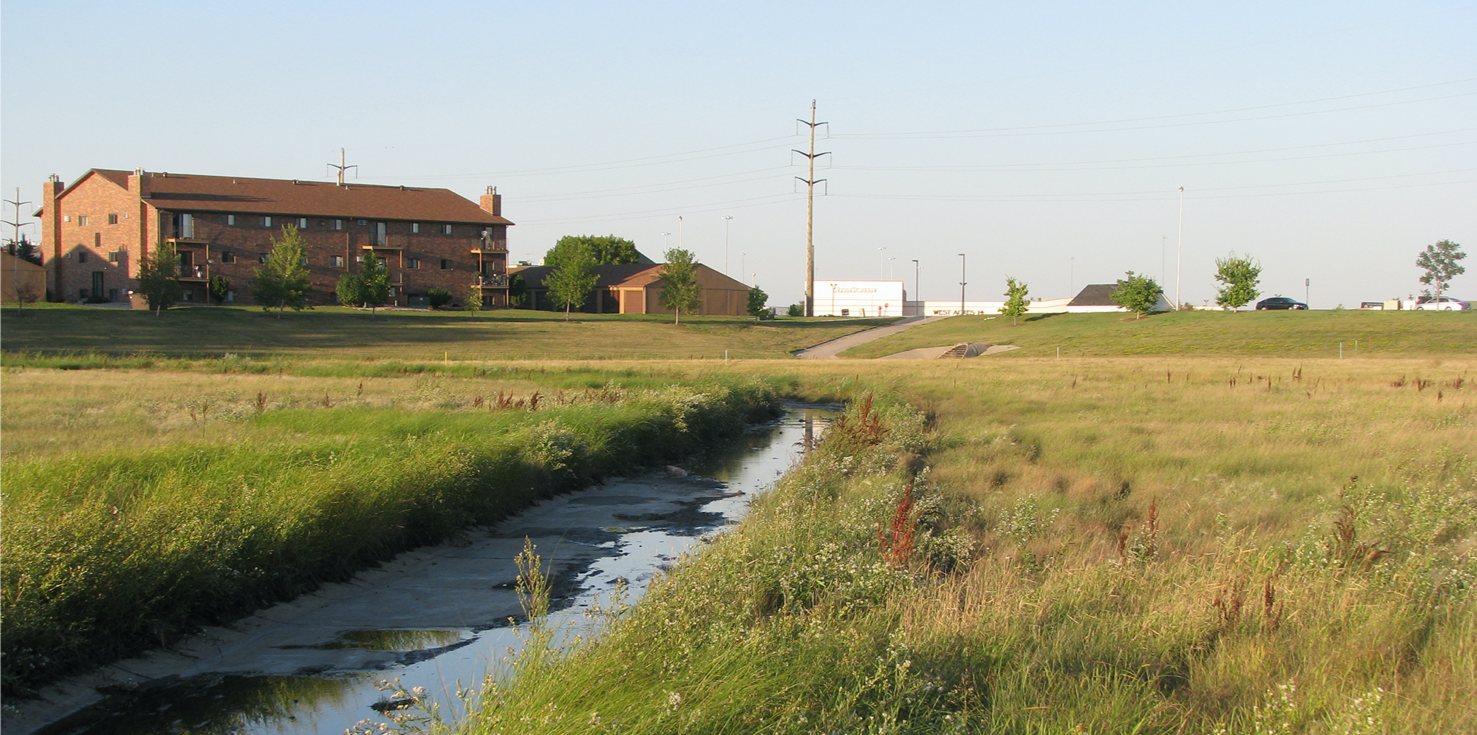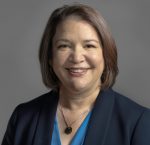
This post is brought to you by Nicole Crutchfield as part of ELGL’s “Creative Community” learning series about the role of arts and culture in local government. Sign up to guest blog about your local government experiences with creative placemaking here – tell your story so we can learn from you!
Planning and design have always been what’s defined me professionally. Trained in landscape architecture and natural resource planning, I’ve always understood that the places where we live are made up of complex systems and that it’s our duty to learn from, and steward, those systems to the best of our ability. Placemaking to me has been about making our cities better, more aesthetically pleasing, and making places people can connect with in a deep way.
Being trained in design I felt like I had an intuitive grasp on how the arts could contribute to a project, so when the City of Fargo hosted artist Jackie Brooker in 2009 to help our city with the challenges we were facing with stormwater management, I naively thought I knew exactly how it would work.
Back in the early 2010s, the idea of “creative placemaking” wasn’t really a thing, or it hadn’t made it’s way to Fargo. The National Endowment for the Arts had just come out with their Our Town grant program which asks artists and arts organizations to partner with municipalities on local challenges.It seemed like a good fit but our central goal at that time was not a broad “placemaking” kind of goal. Citizen engagement and design by community was our main focus. Really, we were looking at the grant as an opportunity to collaborate with Jackie and involve people in our community to help make our spaces better.
When we started, I thought involving an artist would mean that we would partner with them to help build relationships with people, learn what they wanted, and then go back to the office to draw landscape and park plans. Of course, we planned on taking those designs back to the community groups in order to build consensus, and follow that iterative, back-and-forth, community-based design process that we all follow traditionally.
But as the years went by working with Jackie, and in watching other people across the nation embark upon similar projects, as well as experiencing elements of the project unfolding with the community, it began to dawn on me that my frame of reference for how the arts could help us as a city was based on traditional design processes, and didn’t actually acknowledge the power that the arts strategies could bring. Jackie brought decades of experiences in the arts, and in working with communities, and even more importantly, in building community. We entered the work of The Fargo Project by following her lead in how we were thinking of the project, and in how we were connecting with the community.
Our introduction to Jackie began partially with her knowledge of past flooding disasters and the recovery efforts in the state. When she came to us she brought with her research on that disaster recovery, and the disaster recovery methods that other communities were following. When she worked with our local communities she brought those stories with her.
As the project progressed we were able to bring on other partners such as North Dakota State University, RiverKeepers, Growing Together, and other local arts and culture leaders such as the Plains Art Museum and local artists. Together we would jointly plan visits where together we would work through ideas with the community.
Even though the City of Fargo didn’t suffer the disasters and the 1997 floods in the same way that the City of Grand Forks did, we knew flood protections and stormwater management efforts were critically important for the city. We knew we had to be ready for the next round of floods that would certainly come our way. As a city along the Red River, we know that Fargo is in harm’s way. We knew we had to find very Fargo-specific and creative ideas that could help us prepare for future calamities. Working with Jackie allowed us to do that. Not only did she work directly with the community, but she also worked with our leadership, our city administrator to creatively think through possible ideas and responses. Jackie’s presence allowed us to be curious and explore ideas in a way we never did before.
To be honest, we thought we’d be done with the project in a year, but 10 years later, and with many new people and partners in the mix, we’re still working in the spirit of what Jackie brought to the community (Jackie tragically passed away in 2015). It seemed that as time went on, the project kept evolving – we would keep finding new points of discovery, and new partnerships, and these things would always lead us to a whole different path than we planned.
Today I know that when engaging arts and culture strategies there’s really almost a “secret sauce” element. And you know it when it’s there – it’s there when people are connecting with the issues in deep and real ways, it’s there when partners who never spoke to each other are sitting together around the table, it’s there when suddenly the mayor begins to talk about the importance of and creativity within the community, and it’s there when you stumble upon ideas and solutions that were never visible before.
The work we do today to design and plan our city’s infrastructure and open spaces has forever changed because of Jackie’s involvement. What started as a public engagement strategy, has now blossomed into a larger adaptive strategy that helps us address our most complex problems in new ways, and to do so hand-in-hand with the community.
 Nicole Crutchfield is a licensed landscape architect and city planner, serving as Planning Director for the City of Fargo since early 2018. She has been working at the City of Fargo since 2007. Prior to moving to Fargo, she worked for the City of Round Rock, Texas and previous to that was employed in architecture and planning companies providing consultation to mid-size cities throughout the Midwest. Beginning in 2010, she co-managed the Fargo Project with ecological artist, Jackie Brookner. The Fargo Project is a Creative Placemaking project, and is supported by awards from the National Endowment for the Arts Our Town Grant, ArtPlace America and Kresge Foundation. Crutchfield has a Bachelor of Landscape Architecture from Kansas State University, and Master of Science in Natural Resource Management from North Dakota State University. She and The Fargo Project team continue to seek innovative practices for integrating the lessons learned from The Fargo Project’s framework into everyday practice at the City of Fargo.You can find out more about The Fargo Project at: https://www.thefargoproject.com/
Nicole Crutchfield is a licensed landscape architect and city planner, serving as Planning Director for the City of Fargo since early 2018. She has been working at the City of Fargo since 2007. Prior to moving to Fargo, she worked for the City of Round Rock, Texas and previous to that was employed in architecture and planning companies providing consultation to mid-size cities throughout the Midwest. Beginning in 2010, she co-managed the Fargo Project with ecological artist, Jackie Brookner. The Fargo Project is a Creative Placemaking project, and is supported by awards from the National Endowment for the Arts Our Town Grant, ArtPlace America and Kresge Foundation. Crutchfield has a Bachelor of Landscape Architecture from Kansas State University, and Master of Science in Natural Resource Management from North Dakota State University. She and The Fargo Project team continue to seek innovative practices for integrating the lessons learned from The Fargo Project’s framework into everyday practice at the City of Fargo.You can find out more about The Fargo Project at: https://www.thefargoproject.com/
